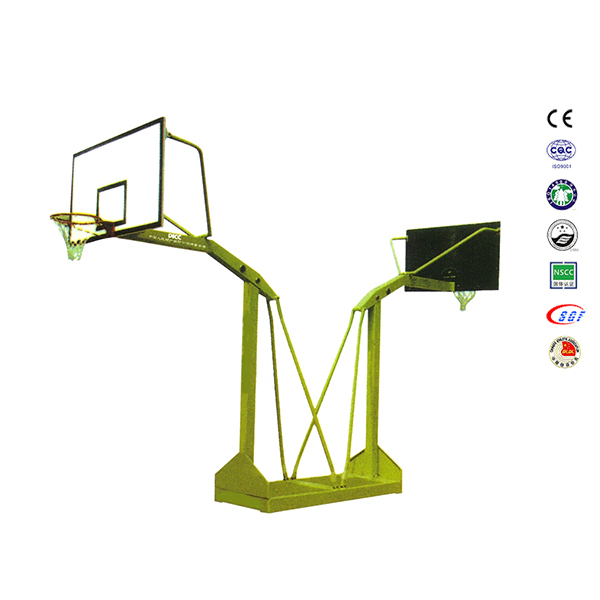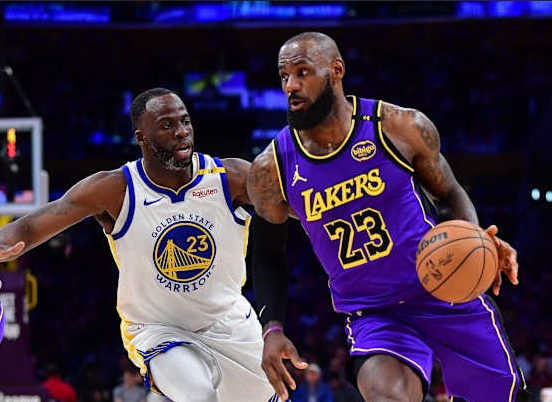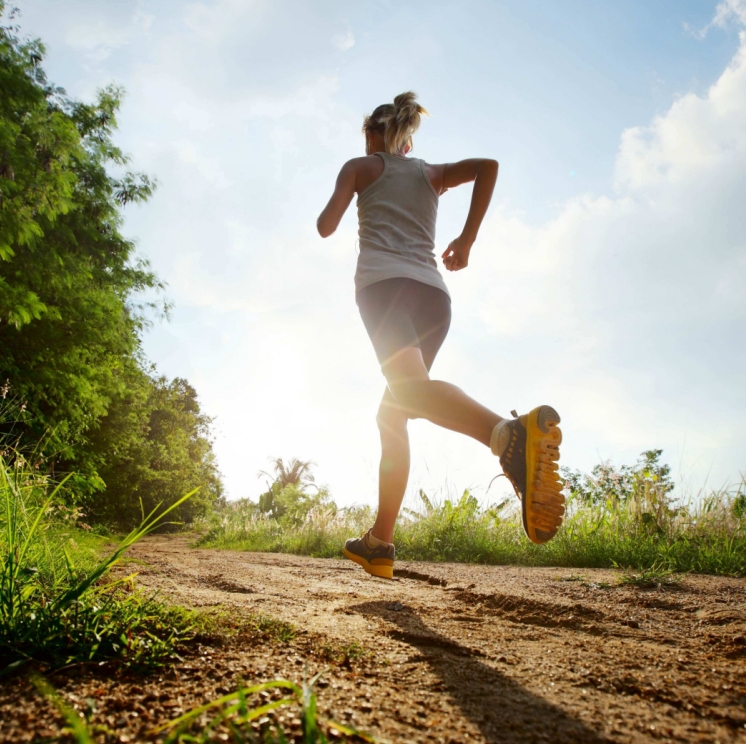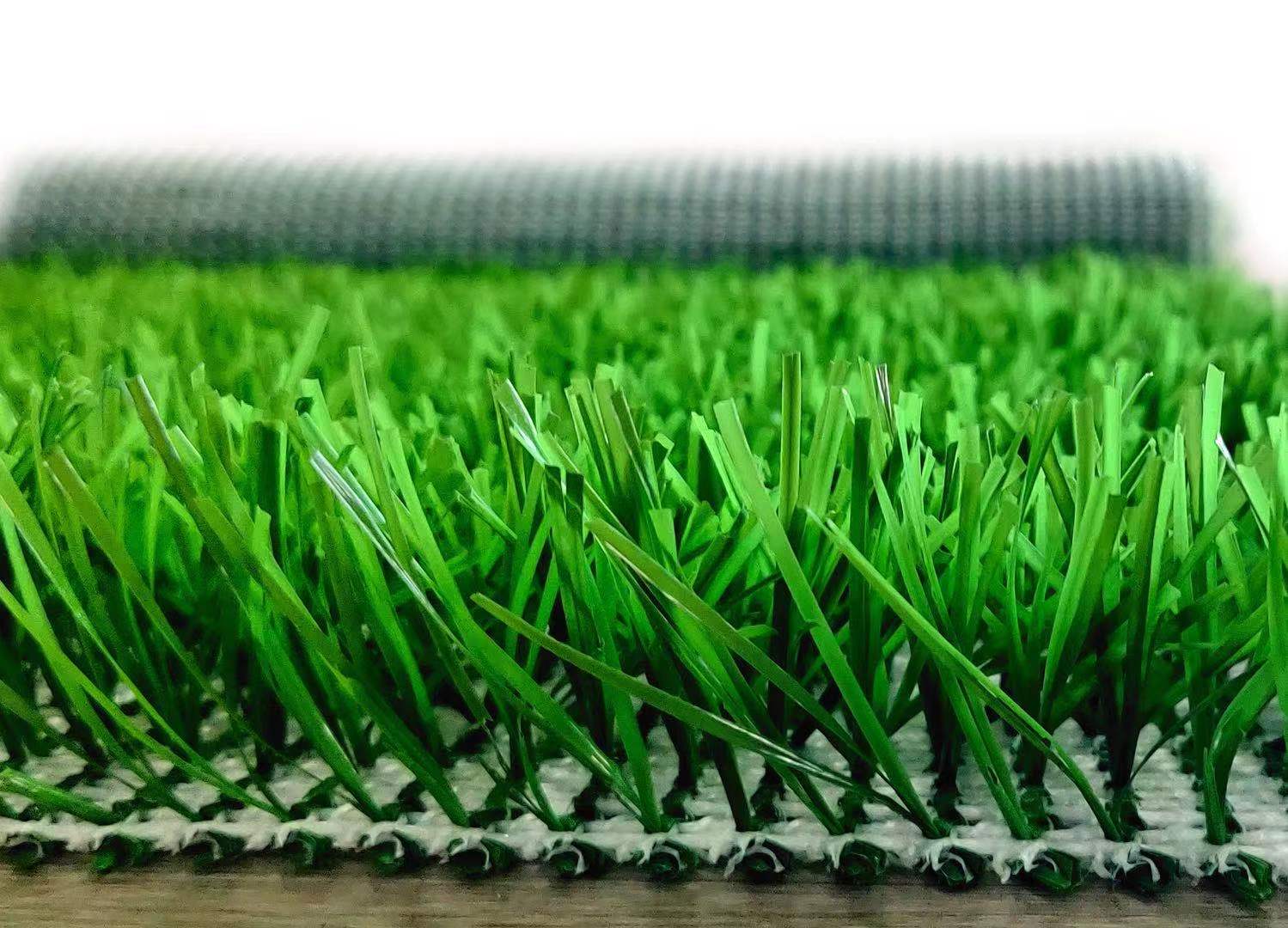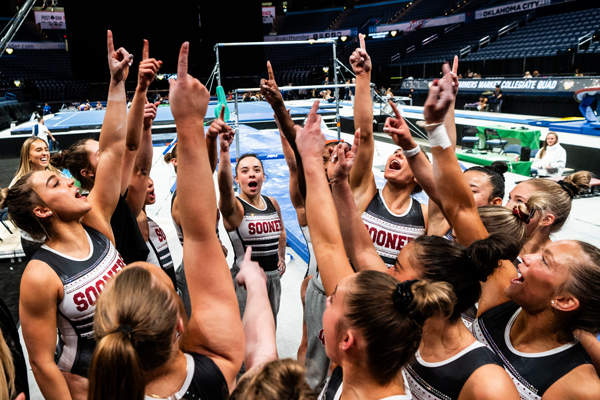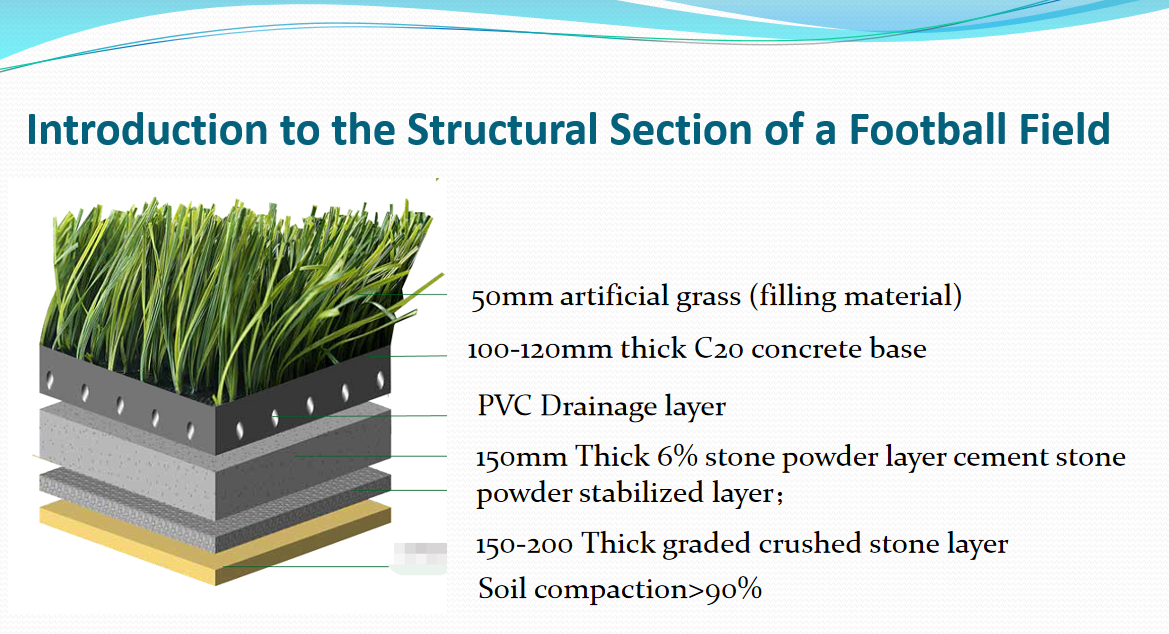Product
What is under astroturf on a football field
Basic Info
1. Filling with sand. Evenly distribute a certain amount of sand on the site, generally between 50mm and 100mm thick. The finer the sand, the easier it is to compact, which is more conducive to fixing the foundation.
2. Compacting the sand. Use professional heavy machinery to compact the entire site to make the sand foundation solid and make it a good foundation.
3. Filling with gravel. Fill a layer of gravel with a thickness of 50mm to 100mm on the sand. In order to ensure the stability of the gravel, it needs to be evenly distributed on the site.
4. Compacting the gravel. Similarly, use professional heavy machinery to compact the entire site. The gravel foundation needs to be well combined with the sand foundation to ensure even dispersion and limit weight and load-bearing capacity.
With the development of my country's sports industry, the rise of the integration of sports and education in schools, and the strengthening of people's fitness awareness, artificial turf sports fields have become one of the basic hardware of various stadiums, sports parks, universities, primary and secondary schools, and even kindergartens. So how to build a high-quality artificial turf sports field? The quality of the field is not only related to the quality of the artificial turf itself, the slope, flatness, drainage and other basic requirements, but also has an inseparable relationship with the filling auxiliary materials. In terms of field elasticity, friction, sports comfort, etc., the filling of auxiliary materials plays a vital role.
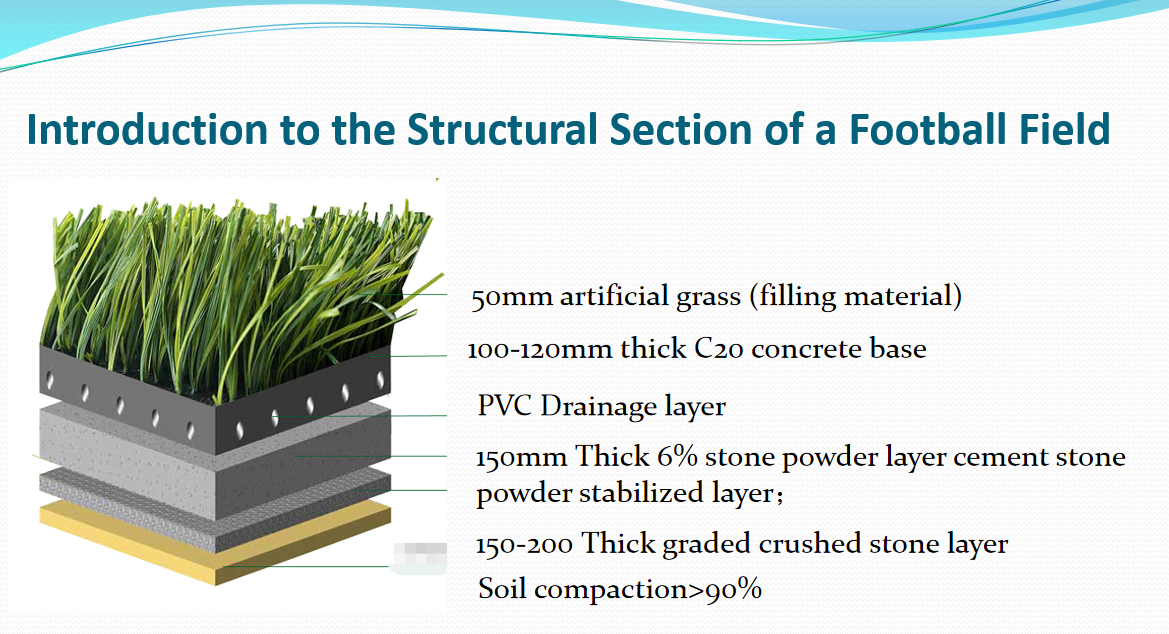
LDK Football Field Structural Section Introduction
Artificial turf filling auxiliary materials:
Artificial turf filling auxiliary materials generally refer to rubber particles and crushed quartz sand. Auxiliary materials are the key elements of the artificial turf system. Its existence makes the establishment of system properties inevitable. At present, the most common practice in the world is to fill quartz sand and rubber particles, first fill quartz sand, and then fill rubber particles on it.According to the test report of FIFA, quartz sand is called stability infill, which is a stability filler. Quartz sand is made of quartz as raw material and is mostly produced by water washing and drying technology. It has the characteristics of high hardness, high specific gravity, uniform particle size, and small edges and corners. Since the artificial turf used in sports venues such as Football fields is 40-60mm, the grass fibers cannot stand completely upright. Filling with quartz sand can not only stabilize the roots of the artificial turf fibers well, so that each artificial turf fiber can stand upright; it can also weight the turf and effectively fix the turf in the appropriate position without displacement. Rubber particles are performance infill, which means performance filler. As the name suggests, it is to ensure its sports performance.
Artificial turf itself also has a certain thickness and elasticity, but in order to meet the needs of sports and get closer to the sports effect of natural grass, it is necessary to further fill it with rubber particles to increase elasticity and absorb shock to prevent athletes from getting injured. Rubber particles are elastic. After filling, the field can have better rebound, minimize sports injuries, and increase sports comfort. Sometimes, in order to further achieve cushioning, a layer of cushioning pads needs to be laid under the turf. Of course, the specific filling amount should be calculated according to the needs of the venue.
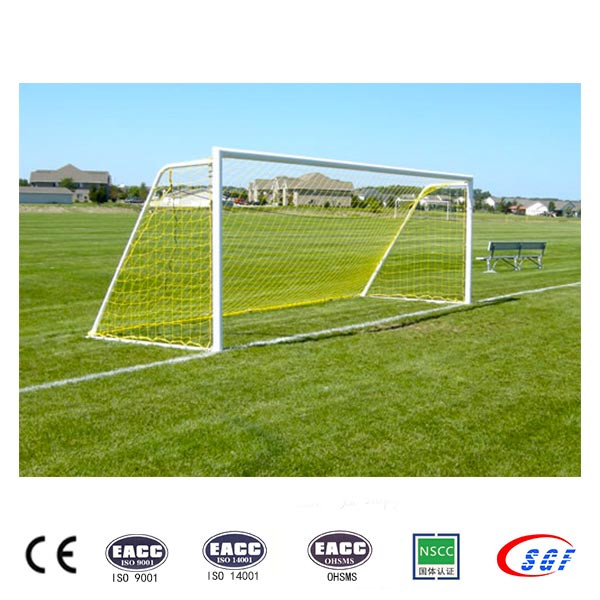
Drainage system of artificial turf:
Artificial turf is a synthetic material widely used in football fields. It is characterized by durability, easy maintenance, and excellent drainage performance. In football matches, a lot of water is often generated on the field, so the drainage capacity of artificial turf has become an important consideration.The drainage system of Artificial turf mainly has the following aspects to ensure that the water on the field can be quickly removed.
First, the underlying structure of artificial turf is composed of multiple layers of materials. Usually, the underlying material will be made of hard materials such as gravel or concrete, which have good water permeability. When making artificial turf, these underlying materials will be laid under the field so that they can play a role in drainage.
Secondly, the grass silk of artificial turf also has a drainage function. Each grass silk on the artificial turf is woven through professional weaving technology, and there are corresponding gaps between these grass silks. When the water on the field flows through the gaps between the grass silks, the grass silk will play a role in guiding water, so that the water can be quickly drained.
In addition, the surface of the artificial turf will also be designed to be slightly convex, so that the water on the field will have a guiding direction when dripping, so as to better remove the water. This design can effectively avoid water accumulation and water stagnation during rainy season or competition.
Finally, artificial turf will also be equipped with waterproof drainage facilities, such as drainage ditches and rainwater collection systems. These facilities can effectively collect and drain moisture from the court to reduce water accumulation and keep the court dry.
In summary, the drainage system of artificial turf is very well designed. Through reasonable underlying structure, grass arrangement and surface design, as well as the setting of corresponding drainage facilities, artificial turf can provide excellent drainage performance, ensuring that moisture on the court can be quickly drained, providing athletes with a good competition environment. The widespread use of artificial turf also benefits from its drainage performance, making the construction of sports venues more convenient and flexible.

More LDK football product recommendations:
Football Cage
Futsal Goals
Metal Football Goal
Aluminum Football Goal
Foldable Football Goal
Portable Football Goal
Mini Football Goal
Futsal Goals
Metal Football Goal
Aluminum Football Goal
Foldable Football Goal
Portable Football Goal
Mini Football Goal






